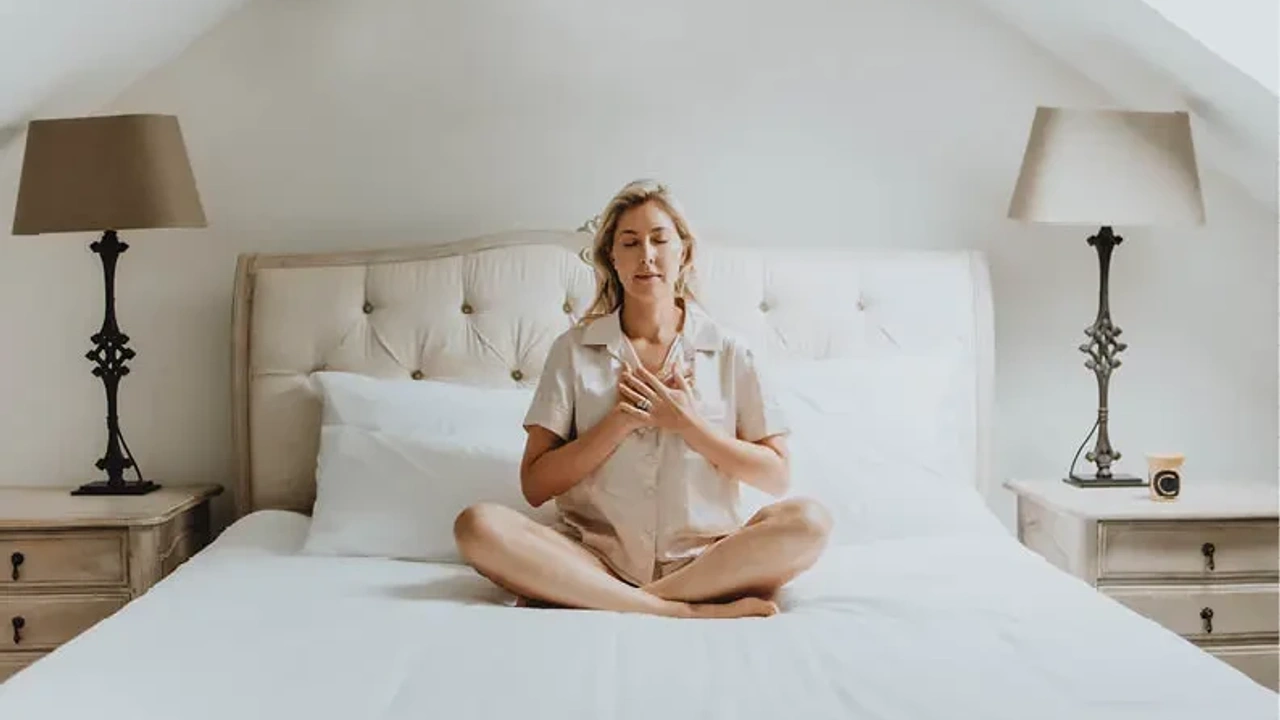How to: Create a Meditation Routine for Beginners
Aug 25, 2021
Did you know that we have over 70,000 thoughts a day?
95% of those thoughts are recycled from the day before and 80% of them are negative.
It makes sense that we can feel burned out, overwhelmed, and anxious at any given moment.
For many years, meditation has been used as a tool to help combat these negative thoughts and emotions. Studies show that a regular meditation practice can reduce the size of the amygdala, making us less reactive to external stressors, while improving our learning skills, focus, memory and mood.
Having a daily meditation routine can help bring focus, calm, compassion and mindfulness into the rest of our day and life.
What is meditation?
Meditation is a form of mindfulness where we train our minds to focus on the present moment by concentrating on an object or activity, like focusing on your breath.
When we meditate, we cultivate awareness and compassion as we train our brains to stop getting easily distracted.
How to incorporate meditation into your daily routine?
The beauty of meditation is that you can do it anytime, anywhere, for as little or as long as you need. There isn't a wrong way to meditate, it looks different for everyone.
To help you get started, we’ve outlined a 5 step process for creating a simple meditation routine for beginners:
1. Choose a place to start meditating
Find a place that is quiet and comfortable for you. It can be on a bed, chair, floor or cushion - anywhere that feels calm with limited distractions.
If you’re feeling creative, set up a meditation corner in your house. Place a meditation cushion, decorations, candles or accessories in a designated spot in your house to help you feel relaxed. Put your phone on aeroplane mode, turn off the TV, limit any distractions and get settled.
For some Meditation Decor inspiration check out our Pinterest board here.
2. Schedule it in
There is no ‘perfect’ time to meditate. Find out what works best for you and schedule it into your day like you would an important appointment.
If you’re a morning person, try a 5 minute morning gratitude meditation for early morning clarity, or if you are meditating to try and sleep better, carve out 5 minutes before bed.
In order to create a meditation habit that sticks, mentally or physically schedule it into your daily to-do list.
Reminder: You can meditate any time of the day, but to make it stick, designating a set time will help it become a habit.
3. Find a meditation
Now the fun part: getting started. Get in position and choose a guided meditation or do it yourself. For beginners, we recommend using guided meditation to help you learn the correct breathing techniques and help you stay present.
Here are some of our recommended meditations for beginners:
- Breathing Relaxation Meditation
- Morning Meditation for Positive Energy
- Two-minute Gratitude Meditation
4. Get comfortable
Once you’ve chosen your meditation, it’s time to get in position. You can do what feels comfortable for you - either lying on your back or sitting down, but we recommend following the 7 point posture check.
The 7 point posture check is as follows:
- Sit: in a cross-legged position
- Spine: sit upright with a long spine to help avoid falling asleep
- Shoulders: do a big shoulder roll to create space between your shoulders and ears
- Hands: place your palms on your legs facing up or down
- Chin: tuck your chin slightly so your neck is long
- Jaw: relax your jaw
- Eyes: gently close your eyes
5. Bring your attention back
If you recognise your mind wandering, just bring it back to the guided meditation or your breath.
Just like any other activity, meditation takes practice. The first few times you sit down to meditate, thoughts may hit you like a hurricane, but don’t worry: with practice, you will learn how to weather these types of ‘thought storms.’
Our mind wandering is a common experience when we first start meditation, but the secret, like mastering anything new… is to gently push through and keep going.
Reminder: Every time you actively bring your attention back it is one bicep curl for your brain.
Ready for the next step in your meditation journey?
We’ve created a free meditation cheat sheet and 7 point posture check to guide you through your meditation practice. Download it, print it off, and put it up around your house for daily reminders and guidance in creating a routine that sticks.
Download and print it off here: Meditation Guides

